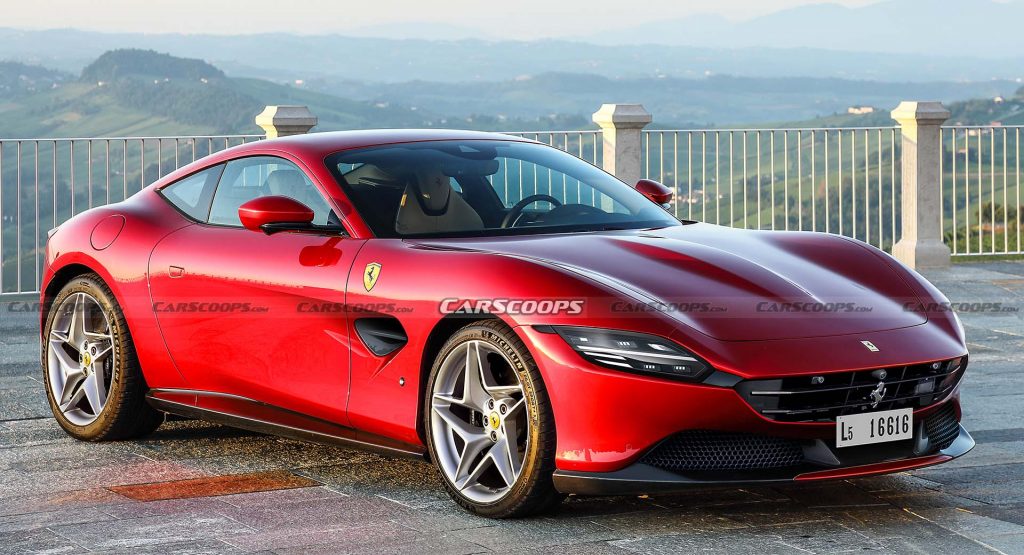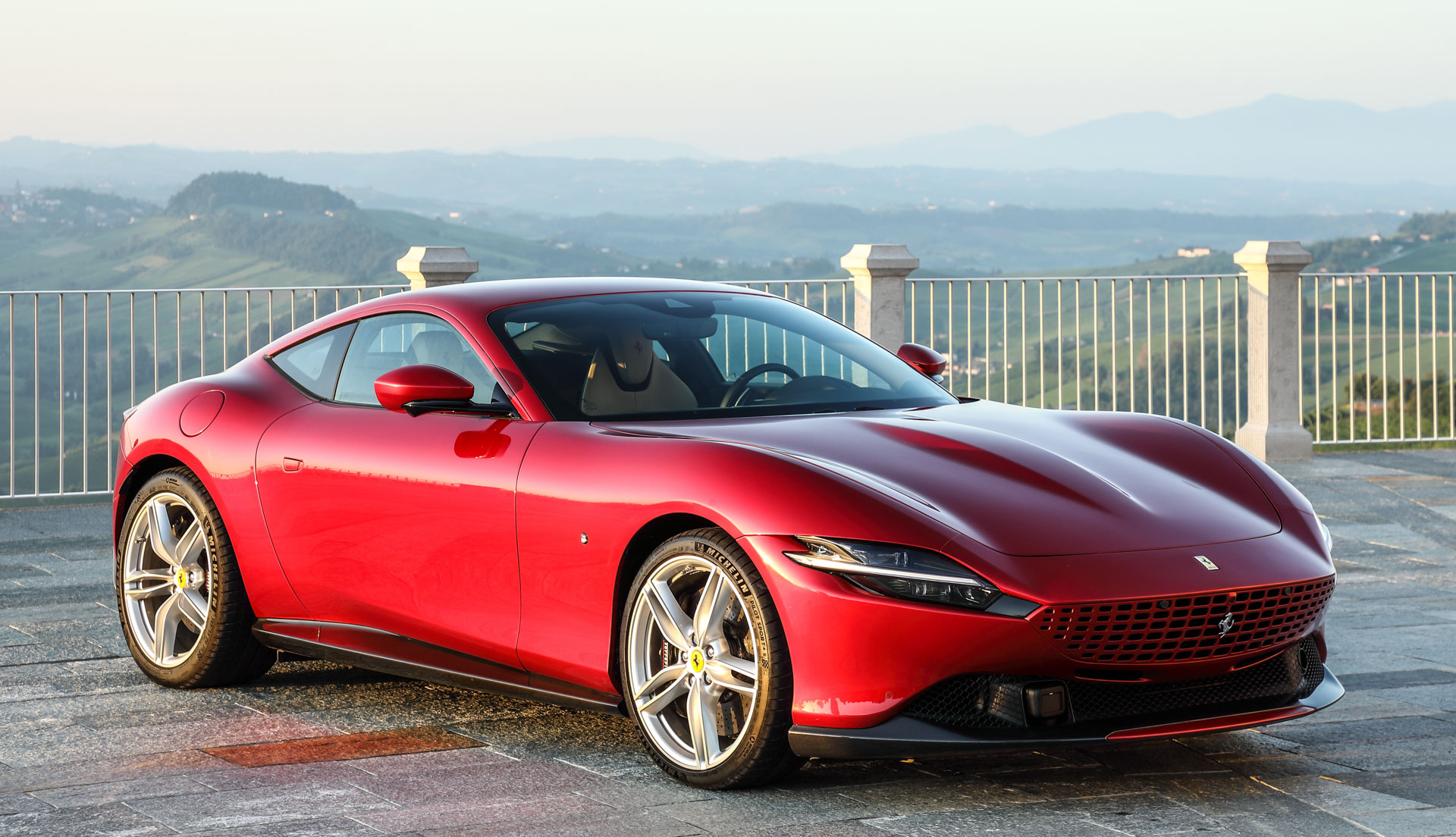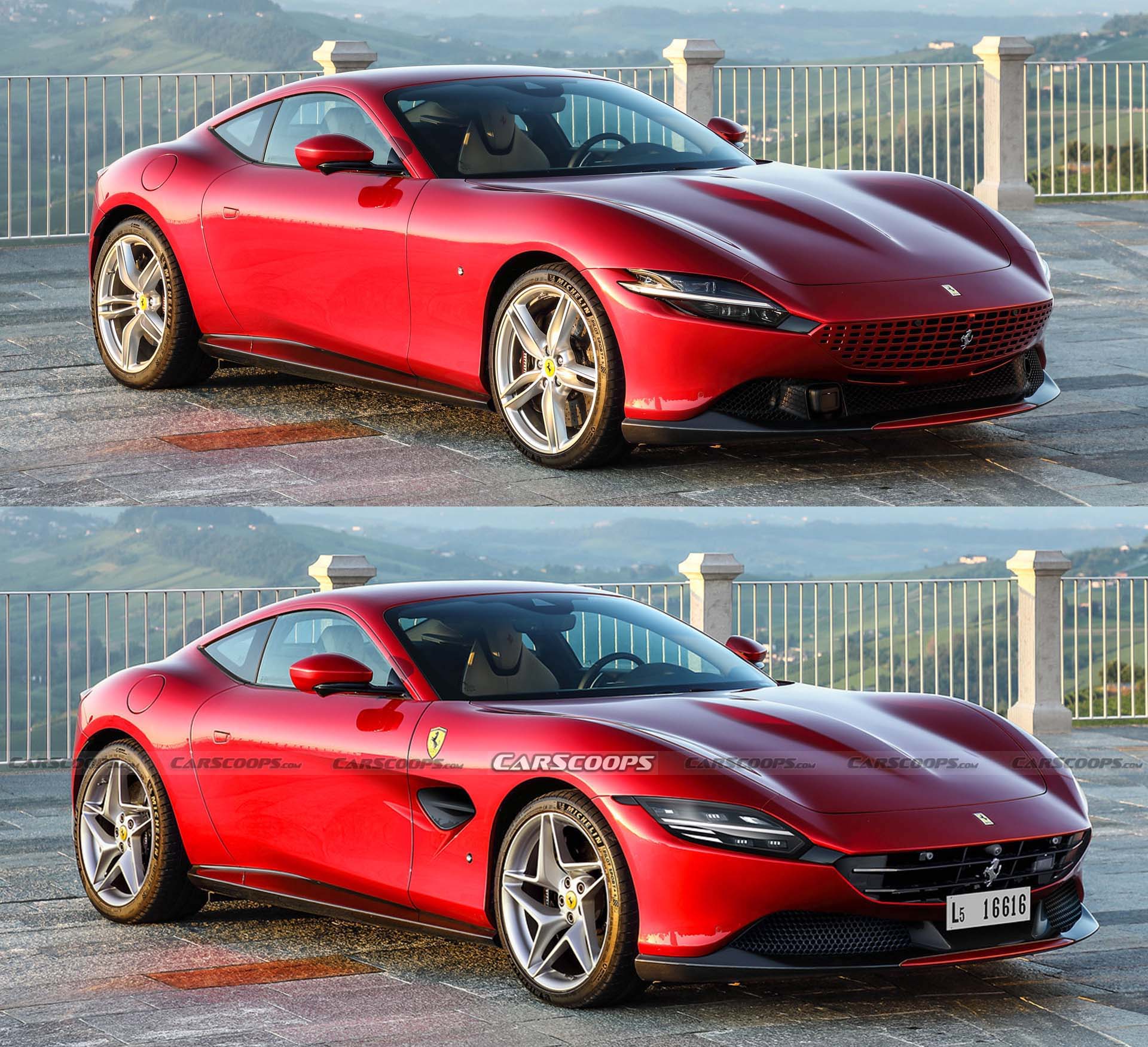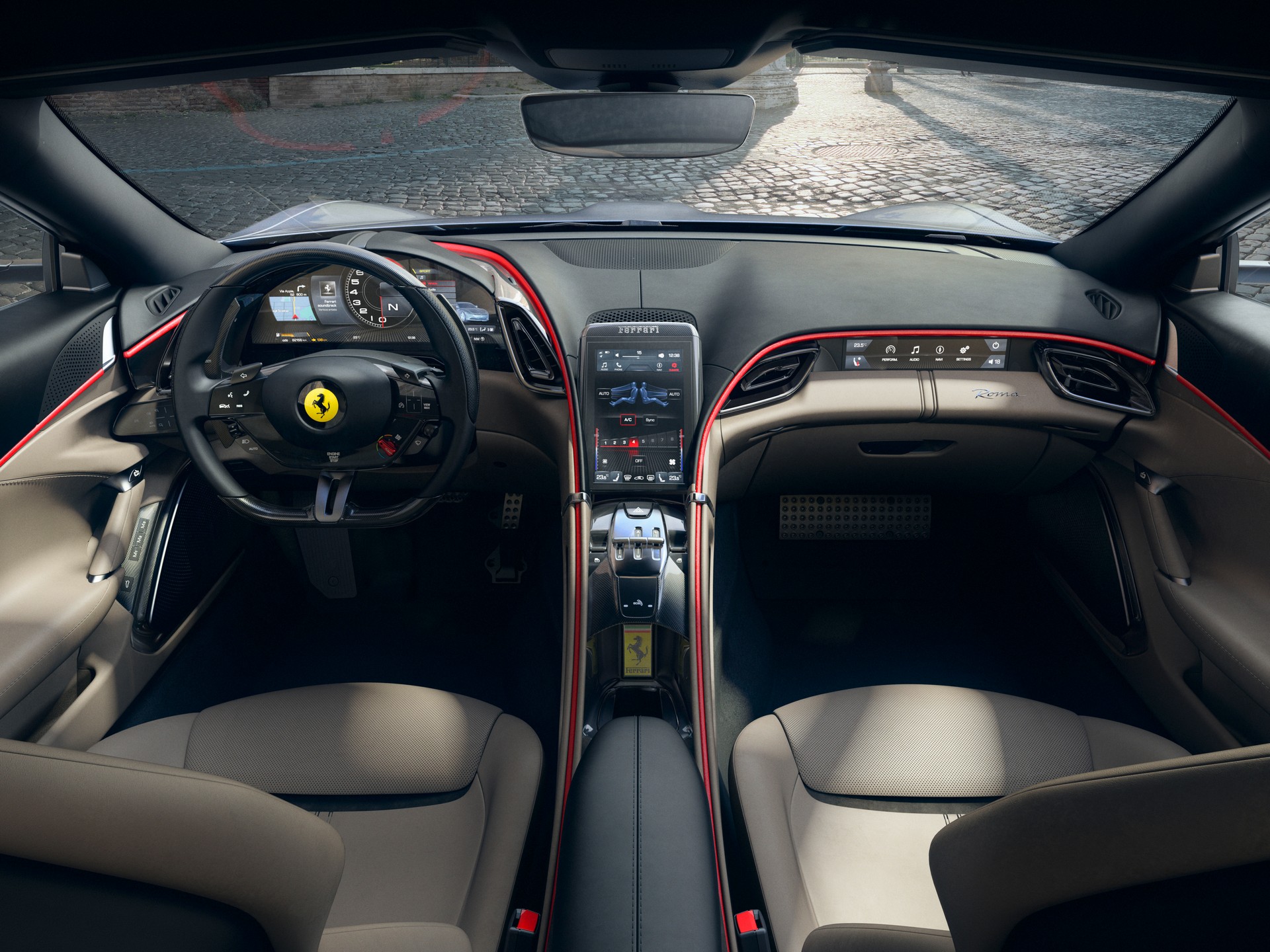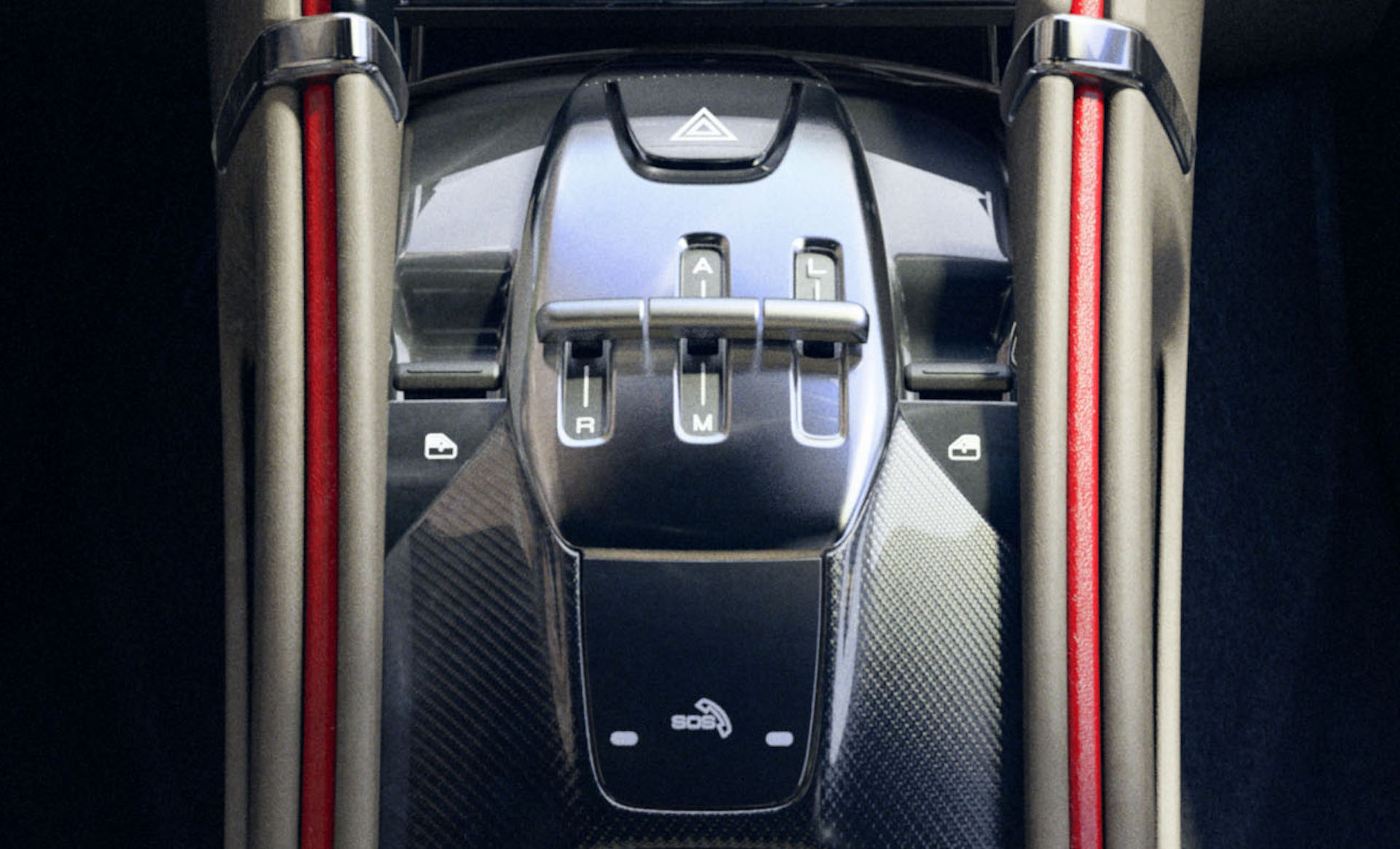This story contains independent illustrations made by artist SB-Medien. The renderings are not related to nor endorsed by Ferrari.
The Ferrari Roma that launched in 2019 was one of the most refreshing things we’ve seen from Maranello in years. While every other Ferrari right down to the entry-level Portofino M works hard to remind us of the company’s current motorsports activities with aggressive aero-influenced styling, the Roma follows a different path, taking inspiration from the brand’s classic front-engined GT cars of the 1950s and early 1960s.
The first production Romas were only delivered a year ago, so it’ll be a while before we see anything in the way of a facelift. But you can bet that Ferrari is already well down that road, tweaking its stylish GT to keep it fresh, and in keeping with recent Ferrari tradition, possibly rolling our the result as the Roma M, where the M stands for ‘Modificata’ (“modified”, i.e. improved). What would you like to see in that facelift? Here’s our wishlist.
Styling
We love the simple elegance of the Roma’s styling, which was developed in house by Ferrari’s design director Flavio Manzoni and his team. You won’t find any Pinfinfarina badges on this one, though it can confidently stand toe to toe with the best of Ferrari’s back catalogue.
Related: Ferrari’s Purosangue SUV Spied With Production Body For The First Time
But we still reckon Ferrari could widen its appeal with a couple of tweaks. One is to replace the controversial fry-cutter grille with something more conventional, and not in body color (technically you can already order a contrast version of the existing grille if you wish).
And as much as we get that the absence of scoops and spoilers underlines the Roma’s refined character, some kind of air outlet on the front fenders would add muscularity without necessarily ruining the overall effect. Let’s not forget that side vents were a fixture on many classic front engined Ferraris in the late 1950s and 1960s.
Finally, a facelift wouldn’t be a facelift without some work to the light clusters. We’d open them out a little and lose the McLaren-style middle bar to give the car a less feminine look without going too crazy because one of the reasons the Roma looks like it does is to attract both men and women to the brand.
We’re not talking huge changes, but they do create a subtly different look. Which do you prefer, the original car in the top picture or our Modificata below it?
Interior
The Roma’s interior is unlike any other Ferrari’s and features a huge center console that rises up from between the seats to clearly separate the passenger from the driver. There’s a fairly large vertical touchscreen, an even larger digital instrument panel that can be configured in all kinds of ways, and a handy cubby to hold the latest Ferrari key, which is a rectangular fob backed by a Ferrari badge just like the one on the nose of the car.
To be honest there’s not much we’d change here, though we’d happily swap the touch-sensitive steering wheel buttons for proper switches. And come to that, a decade on from the the launch of the 458, the first car to relocate turn signal and wiper controls to the wheel, we’re still convinced that stalks are a better and more intuitive solution.
But there’s one thing we’d really love to see. The console shift quadrant borrows a little from the open gate shifters fitted to vintage Ferraris, but the levers are small and fiddly. Ferrari should create a proper metal shifter to slide between the automatic and manual functions of the seven-speed dual-clutch transmission (we’ll gloss over the fact that many of Ferrari’s old-school luxury GTs actually had leather shift gaiters).
Engine
One thing Ferrari doesn’t desperately need to improve about the Roma is its performance. Despite its luxury leanings and being one of Ferrari’s least expensive cars it serves up 612 hp (620 PS) and 561 lb-ft (761 Nm) of torque from a derivative of the F154 twin-turbo V8 used in the F8 Tributo, and in hybrid form in the SF90 Stradale.
Zero to 62 mph (100 km/h) takes 3.4 seconds, and while there are plenty of cars available for less cash that can do the job faster, we can confirm that the Roma feels plenty quick from behind the wheel. Although it makes 100 hp less than an F8 and doesn’t wind as high (7500 rpm vs 8000 rpm), it has almost as much torque, meaning it feels effortlessly rapid.
But it’s not the last word in refinement. The V8 is quite a gruff engine, both at idle and under load, and while that might suit the F8, we think something a little sweeter might be better fit for Ferrari’s GT. Something like the brand new V6 that’s just been launched in the 296 GTB hybrid, which Ferrari insiders say sounds like a mini V12.
Related: This Is What Ferrari’s New 296 GTB Twin-Turbo V6 Sounds Like
Dropping in the entire hybrid powertrain, reconfigured for a front-engined layout, might seem like a timely thing to do, and given that in the 296 GTB it makes a total of 818 hp (829 PS) and 546 lb ft (740 Nm), even detuned to suit the Roma it could give the facelifted car a real performance boost, plus the increasingly important option of driving solely on electric power in town, at least for a few kilometers.
Sadly, we understand that the Roma’s platform wasn’t engineered to accommodate hybrid drivetrains, so it looks like that’s something that will have to wait for a brand new model in years to come. And while the 296’s V6 makes a solid 654 hp (663 PS) even without its 165 hp (167 PS) of electric assistance, it’s probably not considered torquey enough to replace the V8, because the 296’s torque output with electric assistance is still lower than the unassisted Roma’s V8 figure. That being the case, we’d expect the Roma M to get a small boost to around 650 hp (659 PS) to help bring that 0-62 mph time closer to 3 seconds.
What do you think of the current Roma and what would you rather see in the facelifted version? Leave a comment and let us know.



